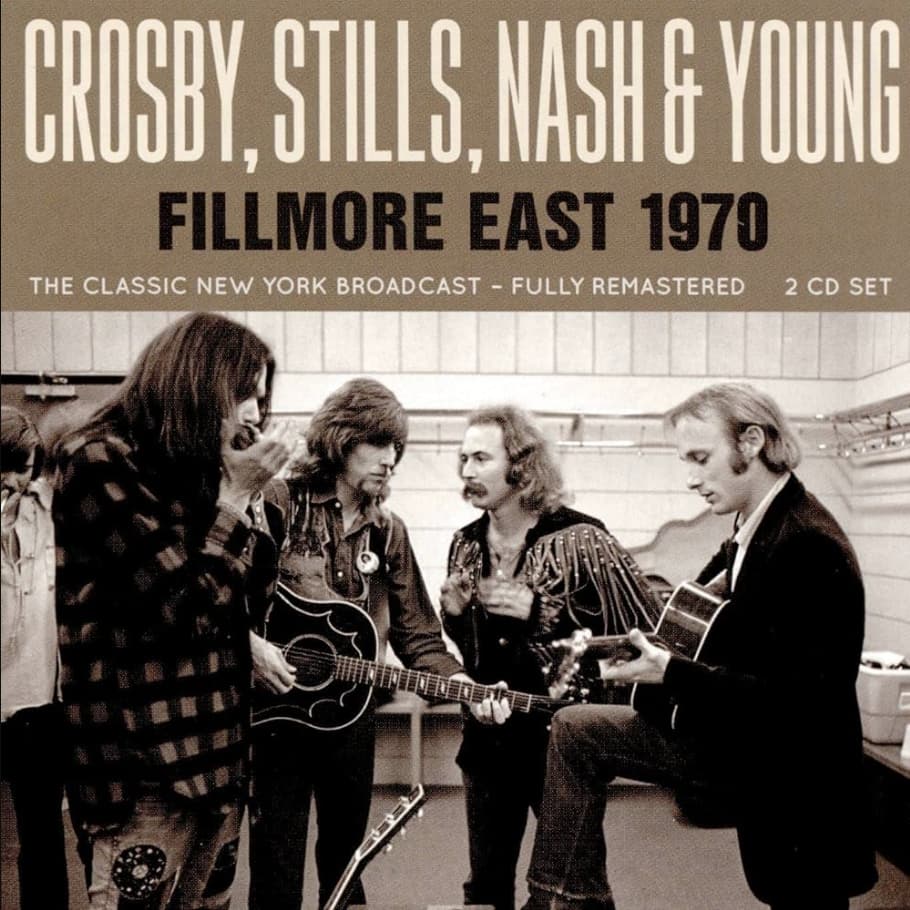
Crosby, Stills, Nash & Young – “Ohio”: A Powerful Protest Anthem of Tragedy and Outrage
Crosby, Stills, Nash & Young’s “Ohio” is a searing protest song that captures the anger, sorrow, and frustration in the wake of the Kent State shootings on May 4, 1970, when the Ohio National Guard opened fire on unarmed college students protesting the Vietnam War, killing four and wounding nine. Written by Neil Young shortly after the incident, “Ohio” became an anthem of resistance and grief, resonating deeply with the counterculture movement and cementing its place in American history as one of the most powerful protest songs of its time. The song reached No. 14 on the Billboard Hot 100 and continues to be a defining piece of protest music, known for its raw emotion and timeless message.
The song opens with a haunting, ominous guitar riff, immediately setting a tone of tension and sorrow. Young’s electric guitar is distorted, gritty, and unrelenting, reflecting the sense of urgency and anger that pervades the track. The steady, pounding rhythm creates an almost military feel, reinforcing the song’s protest against government violence and militarization. The instrumental arrangement is stripped down and raw, amplifying the emotional weight of the lyrics and giving the song a sense of immediacy that makes it feel like a rallying cry.
Lyrically, “Ohio” addresses the shock and anger felt by those who witnessed the tragedy at Kent State. Lines like “Tin soldiers and Nixon coming, we’re finally on our own” capture the betrayal felt by young Americans who were being targeted by their own government. The phrase “tin soldiers” evokes the image of the National Guardsmen, while “Nixon coming” reflects Young’s condemnation of President Richard Nixon’s administration, which escalated tensions with its pro-war stance. These words express a deep disillusionment with authority figures and the military-industrial complex that was fueling the war abroad and unrest at home.
The chorus, “Four dead in Ohio,” is hauntingly simple and direct, repeated like a solemn reminder of the lives lost. This refrain, sung with harmonies by David Crosby, Stephen Stills, and Graham Nash, echoes like a chant, driving home the tragedy in stark terms. The repetition of “four dead in Ohio” adds to the song’s emotional impact, forcing listeners to confront the brutality of the event. It’s a line that demands attention, as if to say that these lives should not be forgotten or dismissed.
Young’s lead vocals are raw and filled with a mix of anger and sorrow, capturing the anguish of a generation confronted with violence from within their own country. His voice, urgent and unpolished, reflects the unfiltered emotion behind the song. The harmonies from Crosby, Stills, and Nash add depth, creating a sense of unity and solidarity among those who stood in opposition to the war and government actions. The combined voices give the song a communal feel, as if they are representing the collective voice of the youth who were affected by the tragedy.
Musically, “Ohio” is rooted in rock with elements of folk protest, blending the intensity of electric guitar with the harmony-driven style that Crosby, Stills, Nash & Young were known for. The instrumental sections, especially the gritty guitar riff and rhythmic drumming, add to the song’s sense of unrest, creating a sound that is as defiant as the message it conveys. This powerful combination of electric and acoustic elements makes the song both grounded and urgent, capturing the rawness of emotion that was felt at the time.
Upon its release, “Ohio” was banned by some radio stations for its anti-government message, but it quickly became a rallying anthem for the anti-war movement. Its impact was immediate, galvanizing protestors and sparking discussion across the country about government overreach, freedom of speech, and the rights of citizens to protest. “Ohio” is now remembered not only as a reaction to a specific event but as a timeless statement on the importance of standing up against injustice and remembering those who have suffered as a result.
The song’s lasting influence has kept it relevant, as its themes of protest and civil rights continue to resonate. “Ohio” has been covered by various artists, and its message has been referenced in discussions about civil rights and government accountability for decades. Its haunting refrain and vivid lyrics remind listeners of the cost of violence and the power of speaking out against it, keeping it a powerful piece of social commentary.
In the end, “Ohio” is more than just a protest song—it’s a memorial to the young lives lost and a call for accountability. Crosby, Stills, Nash & Young’s passionate performance, combined with Young’s powerful lyrics, make it a song that continues to inspire and provoke thought. For fans of protest music and those who believe in the power of song to bring about change, “Ohio” remains a profound anthem of resistance, capturing the spirit of a generation that dared to question and remember.